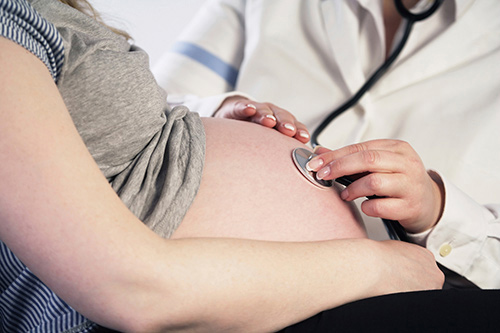Labor and delivery are complicated biological processes that require careful coordination of multiple signaling pathways. In fact, some studies suggest that preterm births can occur when cross-talk between the fetal and maternal cells is disrupted in some way. By applying single-cell sequencing to data from pregnant people, scientists from the National Institutes of Health, Wayne State University, and elsewhere have comprehensively mapped the signaling changes that take place in fetal and maternal cells during labor. The findings could help scientists better understand how crosstalk happens, what causes it to go awry, and if problems could be predicted much sooner.
Details of the study are published in Science Translational Medicine in a paper titled, “Deciphering maternal-fetal cross-talk in the human placenta during parturition using single-cell RNA sequencing.” The map covers the cellular composition of the different placental compartments involved in labor, the maternal and fetal cell types affected the most, and key signaling pathways in those cells that are engaged during labor.
From the data, the team highlighted several important signatures that could be monitored during pregnancy and labor. This includes signatures in maternal circulation throughout gestation and labor that seemed to indicate increased risk of spontaneous preterm birth.
“Collectively, our findings provide insight into the maternal-fetal cross-talk of human parturition and suggest that placenta-derived single-cell signatures can aid in the development of noninvasive biomarkers for the prediction of preterm birth,” the researchers wrote. Furthermore, the findings “highlight the utility of single-cell technologies for shedding light on new cell types and signaling pathways that are implicated in the process of labor.”
To create the atlas, the team used single-cell RNA sequencing to examine the activity and signaling patterns of cells from placentas harvested from 42 pregnancies that were carried to term. They also studied bulk RNA sequencing data in blood samples from a separate cohort including 159 people who had delivered at term, 37 who underwent spontaneous preterm labor, and 63 who underwent preterm premature rupture of membranes. Both datasets were used to construct the atlas.
The map shows changes in gene expression patterns among different cell types in the placenta and surrounding membranes, including both maternal and fetal-derived cells. According to the paper, the cells that were most affected by labor were those in the chorioamniotic membranes which surround the fetus and rupture during the birthing process. Specifically, they observed that the collagen, tumor necrosis factor, galectin, and interleukin pathways all became active in cells in the placenta and the chorioamniotic membranes during labor. The study also showed that the fetal stromal and maternal decidual cells were particularly active in generating inflammatory signaling during labor.



